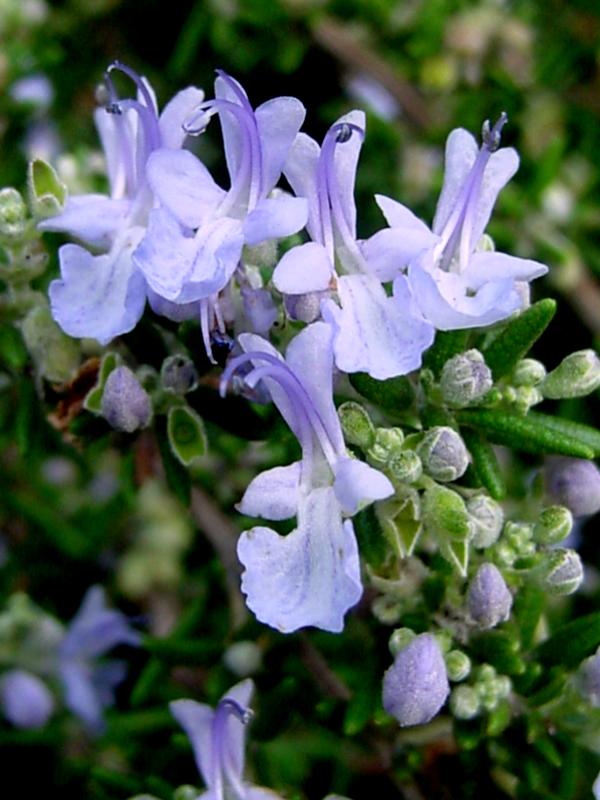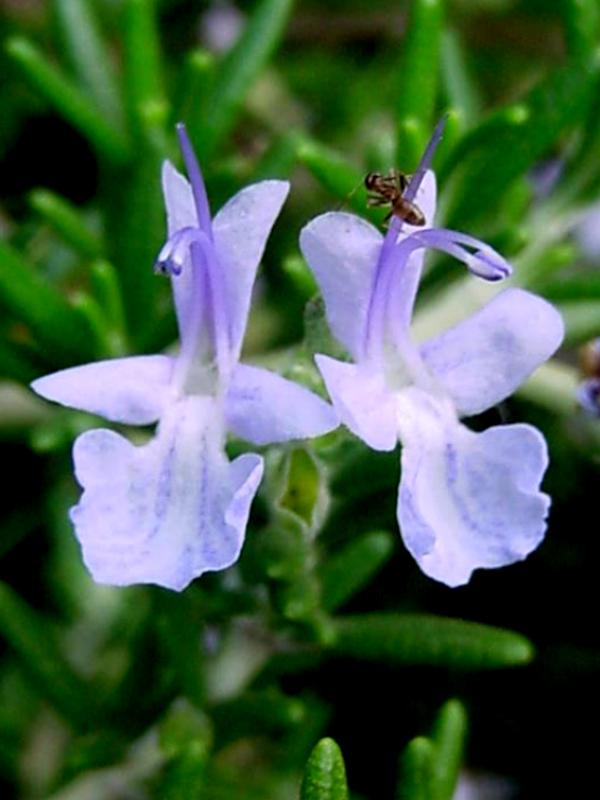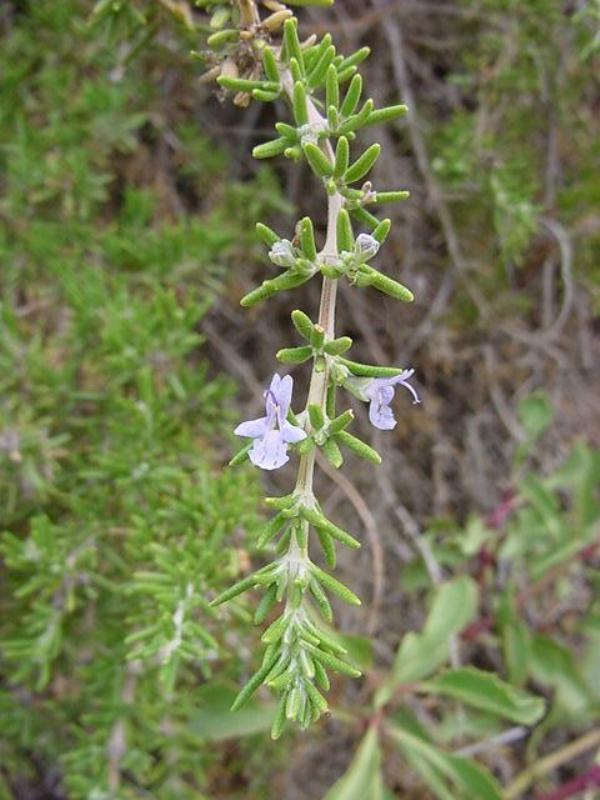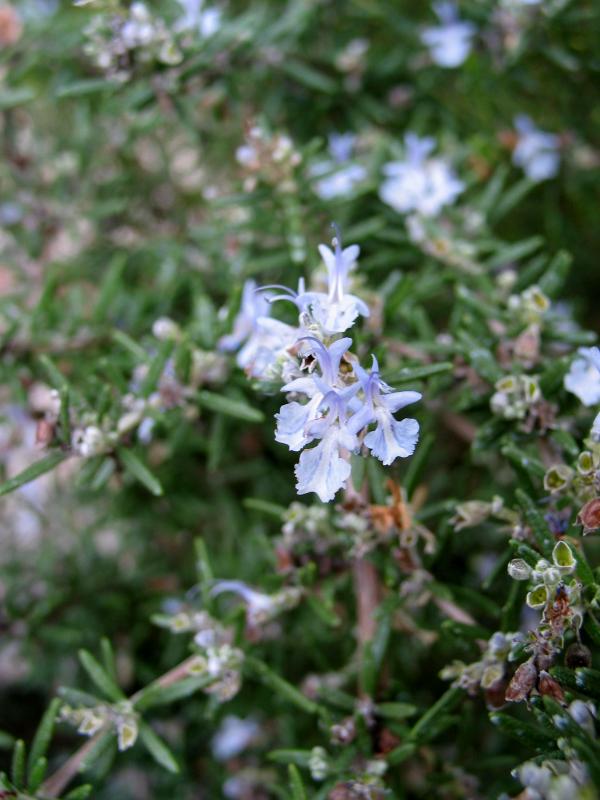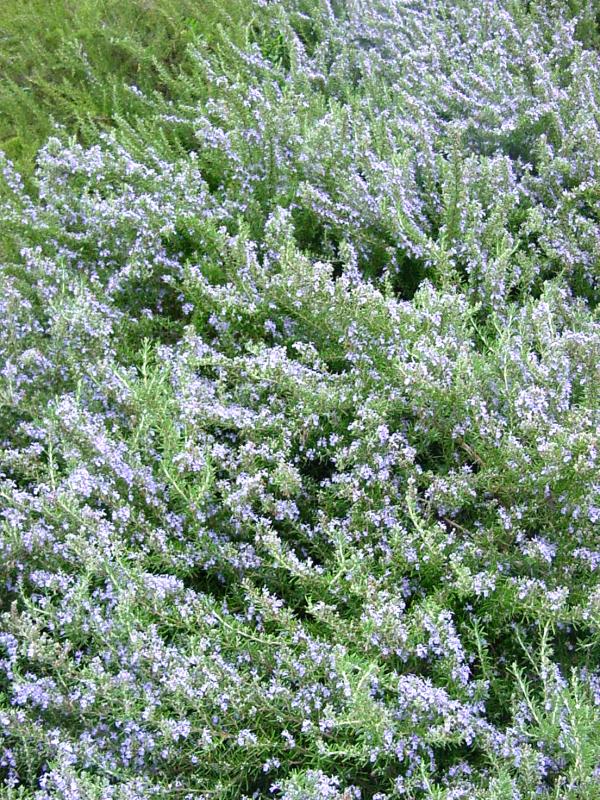| |
Rosemary is a hardy, evergreen shrub growing
2' to 6' tall and often planted on banks to control erosion. The
stems are intricately-branched and woolly when young. The leaves
are opposite with fascicles of 4-6 additional leaves in the axils. They
are narrowly linear to 1/2" long, revolute, dark green and shiny
on the upper surface and densely woolly beneath and around the base
of the fascicle, obtuse-tipped and have a raised midrib on the under
surface. The flowers appear in 1-several-flowered clusters in
the center of the leaf fascicles and terminally on the branchlets. The
calyx is ± glandular-pubescent, deeply cleft laterally, and less
deeply cleft anteriorly, forming three sharply triangular lobes about
1/16" long. The corolla is pale lavender, strongly 2-lipped,
with the upper lip 2-lobed and the lower lip divided into one large
terminal lobe which is irregularly crenulate and somewhat cup-shaped,
and two smaller lateral lobes. There are two arcing stamens which
are inserted inside the corolla throat at the junctions of the terminal
and lateral lobes, and the anthers are curved, blue, <1/16"
long and fused. The single pistil is slightly longer than the
stamens, to almost 1/2" long, also arcing, and has a two-parted
stigma. Both stamens and pistil are well-exserted. Rosemary
may be seen blooming in winter, spring or fall, and has become naturalized
in some areas. These pictures were taken along the trail just
below the main parking lot at Mt. Wilson in the San Gabriel Mountains.
Click here for Latin name derivations: 1) Rosmarinus
2) officinalis.
Pronunciation: roz-mar-EYE-nus oh-fis-in-AY-lis.
Click here for Botanical
Term Meanings.
|
|
